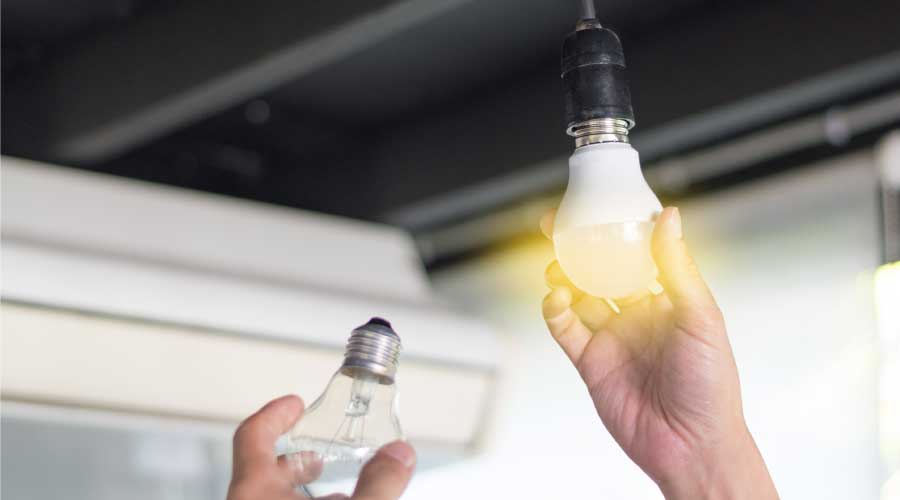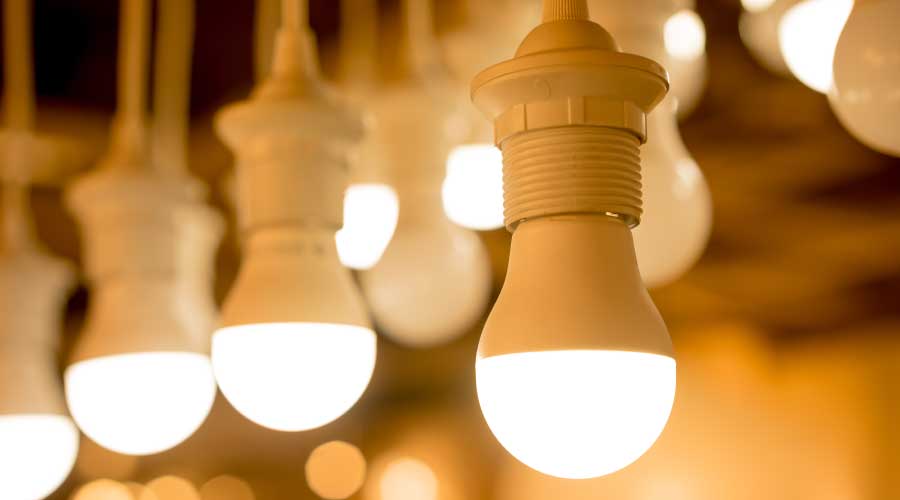Lighting Systems and Brightness
On Philadelphia’s Broad Street, a coordinated color changing light show covers eight building façades for four blocks south of City Hall. Why go through the trouble and expense? The reason is simple. We are physiologically programmed to be excited by flashing light and to react emotionally to intense color. The expectation is that people will be attracted to the fun and excitement and that the shops, restaurants and theaters in the area will benefit.
Lighting can have a comparable influence indoors. The key is to follow through with the architectural intent for the space.
Different spaces have different lighting needs, whether it’s a large main entrance lobby, an open office or a high profile conference room. The Illuminating Engineering Society of North America publishes recommended practice guides that break down criteria by space type. These give concrete recommendations such as vertical and horizontal footcandles, whether the light should create harsh or soft shadows, and acceptable contrast ratios.
What’s more, they suggest what is important and why. What age brackets do occupants fall into? Will they be reading small font text on paper or operating a computer? Just as important are geometries of the space and distribution of light fixtures. These are the kinds of issues that should be considered when evaluating lighting and its effect on the way a space will be used.
One big issue to consider is brightness. Bright light can elevate a person’s mood, but it can also be too intense and painful. It is perfectly acceptable to have points of sparkle in a lobby. But what about an unshielded lamp over a mirror in the restroom? Or reflections of inappropriately aimed track lighting in the monitor of a cash register? When fine visual tasks are being performed, sparkle will interfere with visual precision. The restroom mirror will be uncomfortable to use, but will go largely unnoticed. The cashier will likely make costly errors. And if tasks being performed could be dangerous, limiting glare and sparkle will reduce the risk of accidents.
Brightness also affects how people behave in a space. Through a natural response to light, called phototropism, people use light as a subliminal wayfinding system that will guide them through a space, not because they know where they are going but because it somehow feels right. Most humans are attracted to the brightest light within the field of vision. Brightly lighting a wall at the end of a corridor suggests that this destination is safe. By contrast, designing the lighting in an area to be visually uncomfortable makes people less likely to dawdle and encourages them to find an efficient route to a comfortable zone.
Many main entrance lobbies have a mandatory check-in at the security desk for all visitors. If that area is the brightest and most visible point in the room, it is less likely visitors will simply miss the check-in point while looking at the very prominent elevator lobby. This can be accomplished with glowing pendants over the desk, a brightly lit wall or sconces behind the desk. These brighter areas attract attention, and because people are drawn to light visitors will naturally head in that direction as they look for information about the new space they have just entered.
If a lobby has a small side corridor that leads to a storage room, slightly underlighting the door to the room can draw attention from it.
Related Topics:















